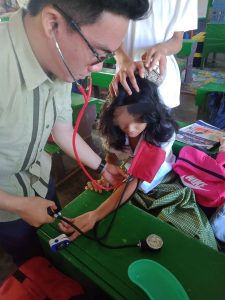Extreme Heat in Schools Alert: A Call to Action for School Safety Amid Sweltering Temperatures
Introduction:
Soaring temperatures around the globe are creating countless obstacles for people and communities, particularly those in locations lacking the right infrastructure to manage extreme heat. On the afternoon of May 8, 2023, at 2:30 PM, a student had an unexpected nosebleed during a classroom conversation, as a result of being exposed to the scorching heat. The improvised classroom, located in an island community, provided minimal shelter from the sun’s powerful rays. This episode is a powerful wake-up call, emphasizing the need for immediate measures to tackle climate change and guarantee student safety.
The First Aid Response
In this extreme heat in schools scenario, the teacher’s rescue and first aid training proved invaluable, as the pupil received immediate care, and the class promptly assisted as well. Informed about the appropriate steps for handling a nosebleed, the students executed the correct procedure: tilting the head forward, letting the blood drain, applying ice, placing it in an ice bag, and applying the ice bag to the head to alleviate the pressure.


The Need for Adequate Infrastructure
This incident underscores the significance of proper infrastructure in schools to shield students from extreme heat in schools and other climate-related challenges. Makeshift classrooms offer minimal protection against sweltering temperatures, posing health risks for both students and teachers. Investing in sustainable and climate-resilient structures is essential to guarantee the safety and well-being of students and teachers, even in far-flung island communities.
Tackling the School Timing Dilemma
With the increasing frequency of extreme heat events as a result of climate change, we might need to reevaluate our conventional school calendar. Schools can help lessen the risks linked to extreme heat exposure by modifying school hours or shifting classes to months that have cooler temperatures. Echoing the suggestion made by the teacher in our story, relocating classes to June could be a more practical solution to ensure a safer and cozier learning atmosphere for both students and educators.
Conclusion
The escalating occurrence of extreme heat events, especially extreme heat in schools, highlights the need to tackle climate change and its effects on educational environments. The island teacher’s experience serves as a call to action for governments and local communities to invest in climate-resilient infrastructure and contemplate adjusting school timings to protect the well-being of students and educators. By doing so, we can ensure that future generations continue to receive quality education in a safe and healthy setting.






